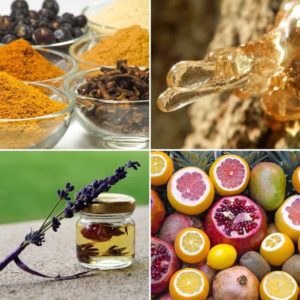“Terpenes” is a major buzzword in the cannabis world, but what exactly are they?

What Are They?
Compounds plants produce that give them their flavors and aroma. (Some insects produce terpenes, as well, including termites!). To begin with, terpenes tend to have a very strong smell and are one of the main parts of plant resin. When you were a kid and got sticky tree sap on your hand that had a piney smell. That smell was caused by terpenes. You were smelling a specific terpene called pinene. In addition, when you eat an orange, the citrus flavor comes from limonene. Terpenes are found everywhere in nature… including cannabis.
The terpenes found in cannabis are the same exact terpenes found in other plants. Plants don’t just produce one terpene at a time, they produce hundreds of different ones.
It’s the mixtures of terpenes in different levels that give plants their distinct flavors (along with other factors such as acid levels, sugar levels, etc.). Above all, they’re why strawberries taste like strawberries and why oranges taste like oranges. In cannabis, skilled breeders isolate and enhance different terpenes to produce new flavors.
Extracting Flavor
The process of extracting of cannabis concentrates the terpenes present. Because of this, you get more of the natural flavor when dabbing a well-made concentrate than you would by smoking flower from the same strain. For connoisseurs, experiencing the full terpene profile of their cannabis might be as important as a wine aficionado experiencing the bouquet and full depth of flavor of their favorite vintage.

Terpenes affect more than just the flavor of cannabis, however. As we begin to better understand the effects of THC, CBD, and other cannabinoids. It is becoming evident that terpenes may play a larger role in the cannabis “high” than was previously known.
Every Terpene Has a Distinct Flavor & Effect
Here’s a rundown of some of the most common terpenes found in cannabis and what to expect in terms of flavor and effect. Please note that terpene levels vary even within the same strain due to different cultivation and curing methods.
Satchel’s A-Z Terpene Guide

Bisabolol
First, also known as levomenol, bisabolol is found in chamomile and is the primary constituent of German chamomile essential oil. It has a sweet floral aroma and is often used in fragrances. Bisabolol also seems to have skin and wound healing properties. Because of this bisabolol has been an ingredient in cosmetics for hundreds of years.
Strains high in Bisabolol: Master Kush, ACDC, Harle-Tsu, Pink Kush, and Rockstar.

Borneol
To begin with Borneol is found naturally in a wide variety of plants, from shrubs to trees. Used in perfumes, borneol has a minty camphor-like aroma and can be found in both rosemary & thyme essential oils.
Strains high in Borneol: Many “haze” strains, such as K13-Haze.

Camphene
Camphene has a pungent, herbal, camphor-like aroma. It is found in turpentine, cypress, bergamot, sage, and valerian. Camphene is the major constituent (60%-80%) of nutmeg essential oil. In the beginning used for its anifungal properties and is found in some topical skin care products.
Strains high in Camphene: Ghost OG, Strawberry Banana, and Mendocino Purps.

Carene
Also known as Delta-3-carene, this terpene has an earthy, woodsy, piney aroma. Carene may have a lemony flavor. It is found in rosemary, cedar, cypress, and pine. Carene is a major (up to 42%) part of turpentine.
Strains high in Carene: Super Silver Haze and Super Lemon Haze.

Caryophyllene
Caryophyllene has a spicy, peppery, woody aroma. This terpene is a major part of clove essential oil. Also found in cannabis’ cousin hops, plus black caraway, basil, ylang-ylang, and cinnamon.
Strains high in Caryophyllene: Hash Plant, OG Kush, Bubba Kush, and Chemdog.
Humulene
This terpene has an earthy, woody smell. First identified in hops, but it is also found in coriander, tobacco, pine, ginger, ginseng, and sage. Humulene in hops as an essential oil and can be up to 40% of the hops total weight.
Strains high in Humulene: Girl Scout Cookies, Headband, and White Widow.

Limonene
Limonene has a strong citrusy smell that is of oranges. This is the terpene that causes citrus fruits to smell and taste citrusy and is found in limes, lemons, oranges, as well as rosemary and peppermint.
Cannabis strains high in limonene cause uplifting effects. Limonene may also assist in absorbing other terpenes.
Strains high in Limonene: Super Lemon Haze, Lemon Skunk, and OG Kush.

Linalool
Linalool has a very floral, sweet, even candy-like aroma, with a hint of citrus. It’s found in lavender, cinnamon, mint, and birch trees. It’s commonly used as a fragrance in lotions, soaps, shampoos, and detergents. Linalool was found to reduce the stress of rodents in a lab test. It may also relieve some aspects of depression.
Strains high in Linalool: Amnesia Haze, Lavender, LA Confidential, and G-13.

Myrcene
Myrcene is the most common terpene found in cannabis and may make up 50% or more of cannabis’ total terpene volume. Its aroma is a musky, clove-y, citrus smell. Furthermore, apart from cannabis, myrcene is also found in mango, lemongrass, hops, and thyme. High levels of myrcene are known for the “couch-lock” effect. Myrcene also lowers resistance across the blood-brain barrier, as a result THC takes effect faster.
Strains high in Myrcene: Lovrin 110, Pure Kush, El Nino, Himalayan Gold, Skunk #1, and White Widow.

Pinene
First of all Pinene gets its name from its pine smell and is the terpene responsible for the aroma of pine trees.
It might sound familiar it’s the main ingredient in turpentine. Found in other conifers, rosemary, pine nuts, camphorweed, and sagebrush. Pinenes are found in higher volumes in sativa varieties of cannabis.
Strains high in Pinene: Jack Herer, Chemdog, Bubba Kush, Trainwreck, Dutch Treat, Romulan, and Super Silver Haze.

